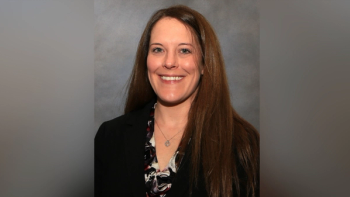
- Pharmaceutical Commerce - May/June 2016
A Conversation with Mark Merritt, Pharmaceutical Care Management Association
As befits the sizable part of the US economy that healthcare represents, its major sectors—hospital providers, insurers, medical professional societies and the pharma industry—all have a prominent role in Washington. An important player in that scene are pharmacy benefit managers (PBMs). The industry’s trade association, the Pharmaceutical Care Management Assn. PBM’s roots (and PCMA) can be traced back decades, but the business has changed dramatically in the 21st century. According to PCMA literature, their benefit-management practices touch the lives of 266 million Americans, primarily as the buying agent for pharmaceutical products paid for by insurance companies, employer health plans and senior citizens under the Medicare Part D benefit. The organization has just launched an outreach program (www.ThatsWhatPBMsDo.com) to educate consumers and customers.
As a 501(c)(6) organization, PCMA is an active lobbying association in Washington and state legislatures. Mark Merritt, president and CEO since 2003, testifies regularly before Congressional committees on drug pricing and other issues. Pharmaceutical Commerce sat down with Mr. Merritt recently; here’s what he had to say.
1) Can you give us a short history of the PBM industry, and the evolution of PCMA as the trade association of that industry?
The pharmacy benefit management industry grew in response to the rapid changes in prescription drugs during the 1990s. Twenty-five years ago there was no “pharmacy benefit”—pharmacy claims were either paid by patients out-of-pocket or were paid for on a fee-for-service basis—both of which were very expensive. This approach became unsustainable as new blockbuster drugs like Lipitor began hitting the market at a time when new regulations allowed drug companies to advertise these products on television for the first time. Suddenly there was enormous supply and demand for these products, and employers, unions and others who offered coverage needed to ensure their enrollees had affordable access to them. The rise of Amazon.com also changed the way consumers shopped, and demand for home delivery and mail service pharmacy grew.
All these factors revealed a need in the marketplace for an industry that specialized in managing pharmacy benefits. That meant negotiating discounts from drug makers and creating more efficient, affordable ways for people to access prescription drugs.
PBMs promoted generics, created networks of affordable drugstores and used their increasing power in the marketplace to bring costs down in ways that were popular with consumers.
As a result, an increasing number of Fortune 500 companies, unions and insurers began hiring pharmacy benefits management companies to reduce costs, often by 30% or more.
This approach was so successful that federal lawmakers began considering replicating the commercial market model in Medicare, which at the time included no prescription drug benefit. The result was Medicare Part D, which became law in 2003 and began operating in 2006. PBMs were hired to administer Part D plans and give seniors the same benefits that were enjoyed in corporate America. The results were spectacular. The results were spectacular. The new benefit was, and is, enormously popular with seniors and has come in under budget projections every year, which is unheard of with entitlement programs.
We project PBMs will save employers, consumers and public health programs $654 billion over the next decade.
Today, specialty pharmacy programs administer powerful medicines that require specialized handling and distribution, more patient education and guidance, and extensive reporting on patients’ response to them.
2) A “membership” question: while there are dozens if not hundreds of PBMs, your membership is 12 of the biggest in the country and 76 affiliates of the biggest in the country. At the same time, some of them are affiliated with insurers; some with retail pharmacy chains and some as independent organizations. How do you achieve consensus among them?
Regardless of the business model of our members, we represent only the PBM side of their respective businesses. Our members are large and compete ferociously against each other. To forge consensus, we focus on protecting pharmacy benefit-management tools from harmful legislation and regulations, and promoting their value proposition in public policy arenas.
3) Let’s take this issue head-on: PCMA is arguably best known, in the halls of Congress and elsewhere, for arguing against the high prices of many drugs. What would you say to pharma business managers on what constitutes a “fair” price for new drugs?
Let’s be clear on one thing to start: Our interests, the interests of our members’ client health plans, are all united on one goal: getting the right drugs to the right patients, at the lowest cost. When a manufacturer offers a drug with the same clinical value as a competing drug but at a lower cost, we do what we can to increase its utilization.
Our position is that we want to create a marketplace where there is competition among drug companies and drugstores, and where payers’ interests are well represented. We always want more competition and bigger price concessions that can be passed back to our customers in the form of lower premiums and cost-sharing. While PBMs don’t produce drugs, prescribe them or price them, they play a huge role by driving down pharmacy costs and using formularies to promote the most affordable, clinically effective drugs in the marketplace. We do a lot to ensure patients have broad access to the medicines they need.
Remember, reducing health and pharmacy costs has implications beyond healthcare. It is important to the economy overall. Every dollar spent on health benefits is a dollar employers can’t spend to create new jobs, increase wages or invest in innovation.
4) PCMA has been critical of industry practices around copay cards, which allow consumers to sidestep the formulary pricing tiers that your member companies impose. But a counterargument has been made for the value of copay assistance in keeping patients on therapy, which should ultimately result in lower healthcare costs for the payer clients of your member companies. Is there a place for copay assistance from your perspective?
There’s a reason that copay coupons—for hospital, doctors and prescription drugs—are banned in public programs like Medicare as illegal “kickbacks” which induce patients to use higher cost services like brand name drugs when equally effective generics are available. They are designed to encourage patients to ignore the formularies and affordable provider networks that were established to keep premiums and out-of-pocket costs as low as possible.
Copay assistance programs do nothing to help uninsured people—they only target people who already have prescription drug coverage, in other words, those who pay copays. They don’t target the poor or needy—Bill Gates can use copay coupons.
The goal is to offer a $25 copay coupon to lure patients away from generics and toward brands that cost the insurer an extra $150 or $200 a month. This ultimately leads to higher premiums for consumers, which is why copay assistance programs have come under increasing scrutiny by Congress, the HHS Inspector General and other government officials. Some have mentioned concerns that coupons are still being marketed in Medicare, which is against federal law.
When I testified at the highly publicized Congressional hearing that included, among others, Martin Shkreli, I warned lawmakers that some manufacturers, like Valeant and Turing, built their whole business model around buying the rights to inexpensive drugs, repricing them at higher rates, using copay coupons to promote them, and saddling insurers (who pay 2/3 the cost of drug coverage) with millions, if not billions, in extra wasteful expenses. The Turing and Valeant models are now collapsing as people begin to see what’s going on.
Consumer groups hate these coupons. They are a classic bait and switch. What happens if patients use them to become stabilized on the most expensive brands and then months or years later, the manufacturer ends the coupon promotions and patients can’t afford their medications?
5) Like the pharma industry itself, PCMA in recent years has focused more closely on the specialty pharmaceutical/pharmacy arena, an area where drug costs are extremely high, and the need for ancillary patient services is critical. How does PCMA view this arena as distinct from “traditional” (non-specialty) pharmacy services?
Our members have taken a significant role here. It’s clear that not all specialty pharmacies are the same. The basic issue is to ensure patients are getting the care they need as it relates to these very powerful medicines. Specialty medicines are often infused or injected, and address very serious conditions like cancer, MS and rheumatoid arthritis. They require special handling, extensive patient education, and oversight on how to prevent and manage side effects. Specialty pharmacies work closely with prescribing physicians, who are very particular about what pharmacies administer these medications.
The drugstore lobby has been pushing “any willing pharmacy” legislation to let any Tom, Dick or Harry local drugstore administer specialty medicines, regardless of their expertise or qualifications. We don’t believe additional state or federal mandates are needed here; organizations like URAC, which provides accreditation for the professional practices of specialty pharmacies, is very involved in this area. (Ed. note: see Pharmaceutical Commerce, May/June 2015, for a report on URAC and other accreditations.)
6) Which brings us to community pharmacy trade associations: There has been a years-long tussle between PCMA and community pharmacy organizations, in courts and in legislatures, over a slew of issues involving mail-order fulfillment practices, pharmacy reimbursements and other issues. In your opinion, what is the proper role of community pharmacies in the US healthcare system?
Local pharmacies play a huge and indispensable role. Employers and insurers understand and respect this, but they also can’t afford to pay any more than they need to. In the old days, pharmacists operated on a fee-for-service basis, where they could charge whatever they wanted then send the bill to the insurer. The reality is that those days have been gone for a decade or more.
Today, there are 67,000 pharmacy locations—more than the number of Taco Bell, Kentucky Fried Chicken, McDonald’s, Burger King, Pizza Hut, Wendy’s, Domino’s Pizza and Dunkin Donut locations combined. In many cities, there are multiple drugstores on the same block. We have a responsibility to make these drugstores compete against each other and to encourage consumers to consider the pharmacies that offer the lowest out-of-pocket costs.
Pharmacy networks were created for this purpose. In recent years, discount networks have been created to promote consumers to use those drugstores within the network that offers the lowest rates. PBMs have been instrumental in creating these “preferred” pharmacy networks, which are now especially popular with seniors in Medicare Part D.
Our preferred networks are very popular with seniors, who see lower costs.
7) It can be argued that PBMs exist because the federal government lacks the authority to negotiate drug prices directly with the pharma industry. That leads to two questions: What will happen if, as several presidential candidates of both parties have proposed, CMS will be authorized to negotiate prices? What does this do to the future of the PBM business?
First of all, price controls wouldn’t reduce costs and would require Washington to establish a one-size-fits-all formulary that would be extremely unpopular with seniors. That would completely disrupt Medicare Part D, which is built on hundreds of different plan options and formularies for seniors to choose from. That’s one of the reasons why the President never seriously pursued this during the fight over the Affordable Care Act, even though one party controlled the White House and both houses of Congress.
People cite the example of the Veterans Administration and its negotiations, but in our opinion, the VA has been a disaster.
It’s also worth noting that there’s a lot more to reducing prescription drug spending than unit prices of a drug. The key is to reduce the overall drug trend and pharmacy costs. That means ensuring the right mix of drugs, eliminating different drugs prescribed by different doctors for the same condition, and encouraging the use of generics to marginalize the importance and utilization of brands that are overpriced.
Getting price concessions from manufacturers is a big part of what PCMA members do, but it’s not the only part. Our success is reflected in the Medicare Part D program, which is largely administered by PBMs and is the most successful, affordable health benefit in America. Every year, it has come in beneath the cost projections of the Congressional Budget Office. Now, PBMs have been invited into state Medicaid programs, and we’re helping states save billions of dollars.
8) With the rise of specialty pharmaceuticals, consolidation among multinational pharma companies and consolidation among healthcare providers, and the overall drive for performance-driven, value-based healthcare, the US healthcare system is changing dramatically. What’s your perspective on the future look of US healthcare, and PCMA members’ role within that?
For some years now, healthcare in America has been moving toward wellness and prevention, and away from simply reacting to health crises after-the-fact in hospital emergency rooms. This trend will only increase as more specialty medicines come to market for chronic conditions. Payers will face the same challenges tomorrow as they do today, namely how to provide the most affordable access to these expensive products. In the future, there will be more, not fewer, prescriptions, and more and more “wonder drugs” will become available. PBMs will be called on to make sure patients can afford to access these products.
Competition will keep all of this going in the right direction. In many ways, PBMs, manufacturers, insurers and pharmacies are all trying to get to the same place: getting the right medicines in the hands of the right patients. This is best done through the marketplace.
Articles in this issue
over 9 years ago
FDA looks to industry for help in DSCSA complianceover 9 years ago
Clinical cold chain vendors go into a deep freezeover 9 years ago
Oncology: a new era in therapies; same cost concernsover 9 years ago
Brand enhancement and safety with unit-dose packagingover 9 years ago
Managing supply chains from the cloudover 9 years ago
Changing the payment paradigmover 9 years ago
Specialty pharmacy dynamicsNewsletter
Stay ahead in the life sciences industry with Pharmaceutical Commerce, the latest news, trends, and strategies in drug distribution, commercialization, and market access.





